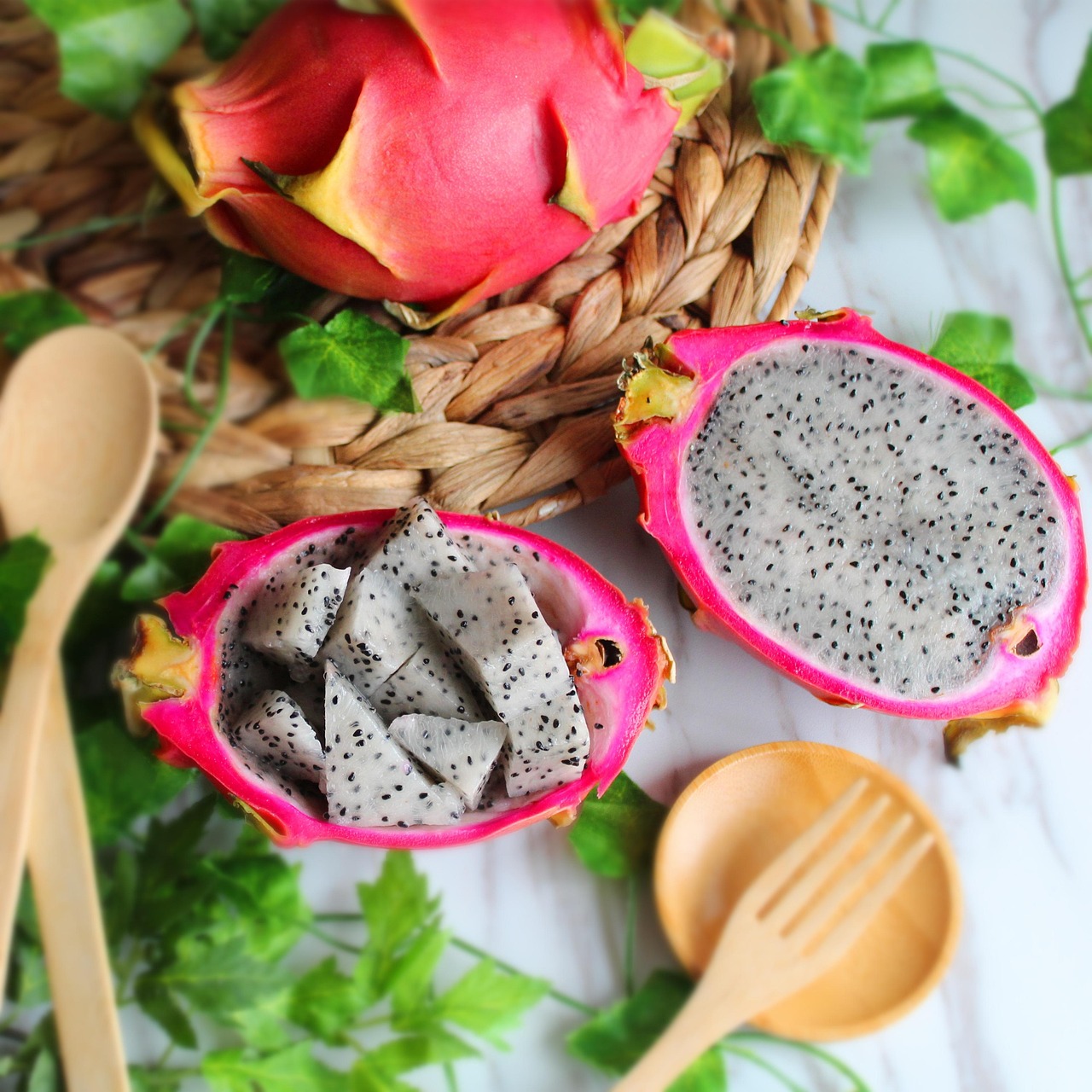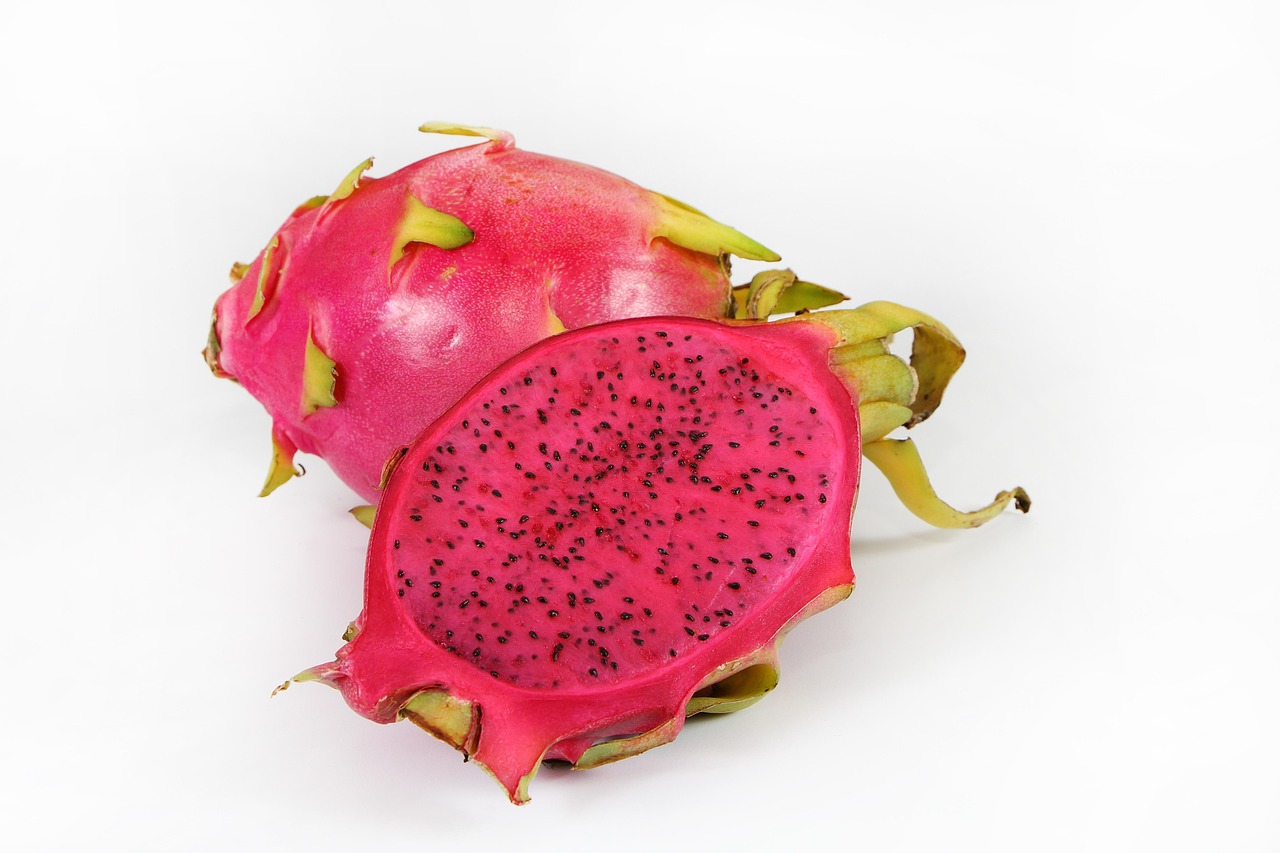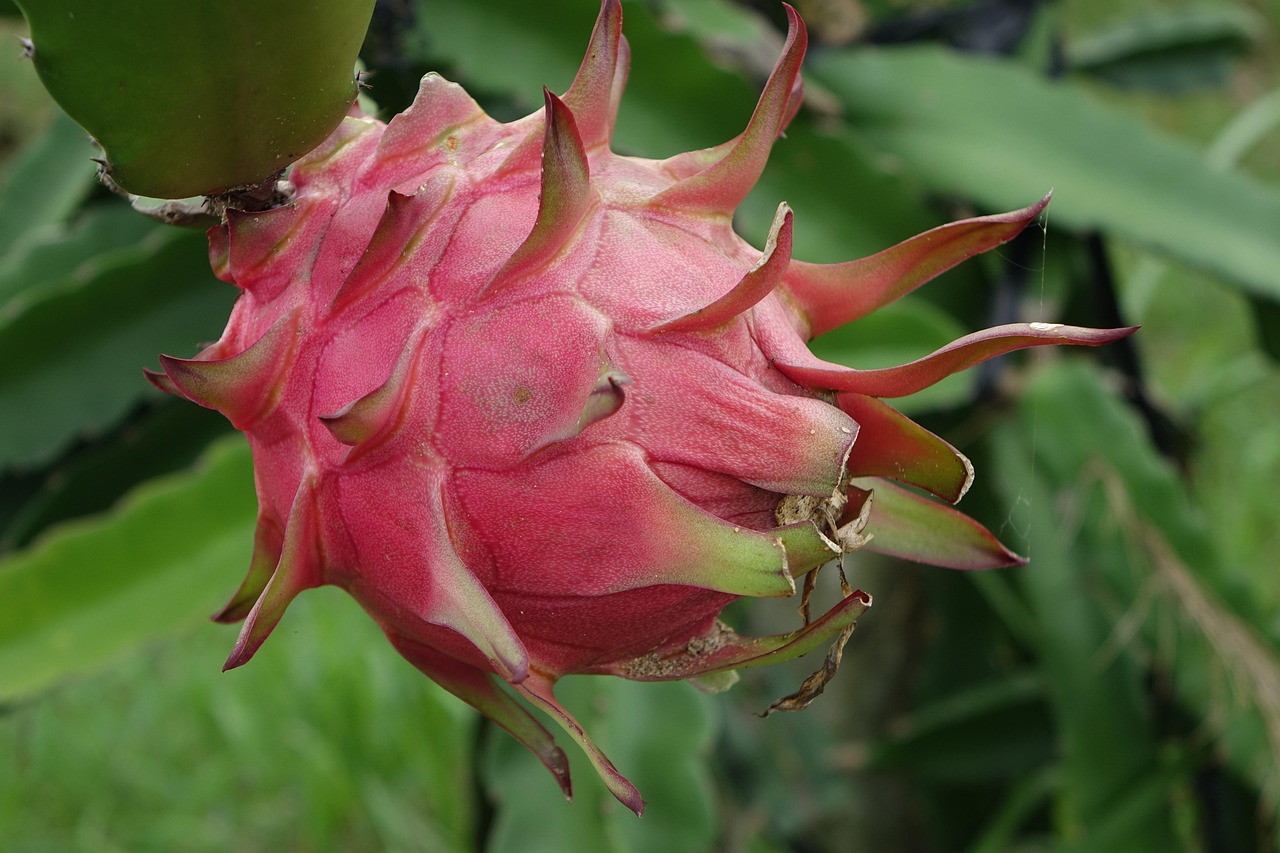The Fascinating World of Dragon Fruit (Pitaya)

A Fruit of Legends and Health Benefits
Dragon fruit (Hylocereus spp.*), commonly referred to as pitaya, is a tropical fruit that has captivated the interest of health-conscious individuals, researchers, and fruit enthusiasts alike. Its striking appearance, combined with a powerhouse of nutritional benefits, makes it an exceptional addition to any diet.
A Mythical Origin
According to ancient legends, dragon fruit was believed to be the final ember expelled from the mouth of a fire-breathing dragon. Warriors who slayed these mythical creatures were said to harvest the fruit as a prize, consuming it for strength and vitality. While this is, of course, a tale from folklore, the fruit’s vibrant, scaly exterior certainly resembles something from a mythical world.

Nutritional and Health Benefits of dragon fruit
Dragon fruit is not just visually stunning; it is also a nutritional powerhouse. It is particularly rich in:
– Lycopene – A powerful antioxidant known for its potential role in reducing the risk of heart disease and certain cancers.
– Vitamin C – An essential vitamin that strengthens the immune system, enhances skin health, and promotes collagen production.
– Dietary Fiber – Supports digestion and gut health, aiding in the regulation of blood sugar levels and cholesterol.
– Antioxidants – Compounds such as betalains, flavonoids, and polyphenols help combat oxidative stress, reducing the risk of chronic diseases.
A Unique Botanical Background
Unlike most fruits, dragon fruit grows on a climbing cactus species from the genus Hylocereus. Native to Central America but now cultivated in tropical and subtropical regions worldwide, the plant is epiphytic, meaning it can grow on other structures, such as trees or rock formations, while drawing nutrients from the air and rain.

Diverse Varieties and Flavor Profiles
Dragon fruit is available in several varieties, each with a distinct appearance and taste:
– White-fleshed (Hylocereus undatus) – The most common variety, featuring a pink outer skin and white interior speckled with tiny black seeds. It has a mild, subtly sweet flavor.
– Red-fleshed (Hylocereus costaricensis) – This variety has deep magenta flesh and a sweeter, more intense flavor profile, with higher antioxidant content.
– Yellow-skinned (Selenicereus megalanthus) – Featuring a bright yellow exterior with white pulp, this variety is the sweetest and often considered the most flavorful.
Cultural and Environmental Significance
– Night-Blooming Beauty – Dragon fruit cacti produce large, fragrant flowers that bloom only at night and are pollinated primarily by nocturnal creatures such as bats and moths. These flowers, sometimes called “Moonflowers” or “Queen of the Night,” are among the largest in the plant kingdom.
– Sustainable Growth – Due to its cactus-like nature, dragon fruit requires minimal water compared to other tropical fruits, making it an environmentally friendly crop for arid regions.

Culinary and Practical Uses
–Edible Flowers: The stunning flowers of the dragon fruit plant are not only visually captivating but also edible. They are often used in herbal teas and traditional remedies.
– Natural Dye: While the outer skin of the fruit is not consumed, it contains pigments that can be used to create natural dyes for textiles and food coloring.
– Versatile Ingredient: – Dragon fruit is enjoyed fresh, blended into smoothies, incorporated into salads, and even used in gourmet dishes for an exotic touch. Its subtle sweetness and refreshing texture make it a versatile ingredient in both sweet and savory applications.
A Future Superfruit?
With increasing interest in superfoods, researchers continue to explore dragon fruit’s potential health benefits, including its role in promoting gut microbiome diversity, reducing inflammation, and even supporting metabolic health. As global demand for nutritious and sustainable fruits grows, dragon fruit is positioned as a unique and valuable addition to modern diets.
Our Conclusion
Dragon fruit is more than just an exotic delicacy—it is a fruit of historical mystique, exceptional nutritional value, and ecological significance. Whether you are a researcher investigating its health benefits, a food enthusiast seeking new flavors, or a grower looking for sustainable crops, dragon fruit stands out as a fascinating and rewarding choice.
@hilariouscreativities Dragon fruit is high in lycopene, which can lower risks of heart disease and cancer. It is also high in vitamin C, fiber and antioxidants. The dragon fruit was once thought to be the last thing that comes out of a fire-breathing dragon’s mouth. The skin should not be eaten on a dragon fruit. #DragonFruit ♬ original sound – Hilarious Creations
#DragonFruit #Pitaya #Superfruit #HealthBenefits #NutritionalScience #SustainableAgriculture #ExoticFruits
Sources: LoyalMentors, chatgtp, canva, google imgs, pixabay,